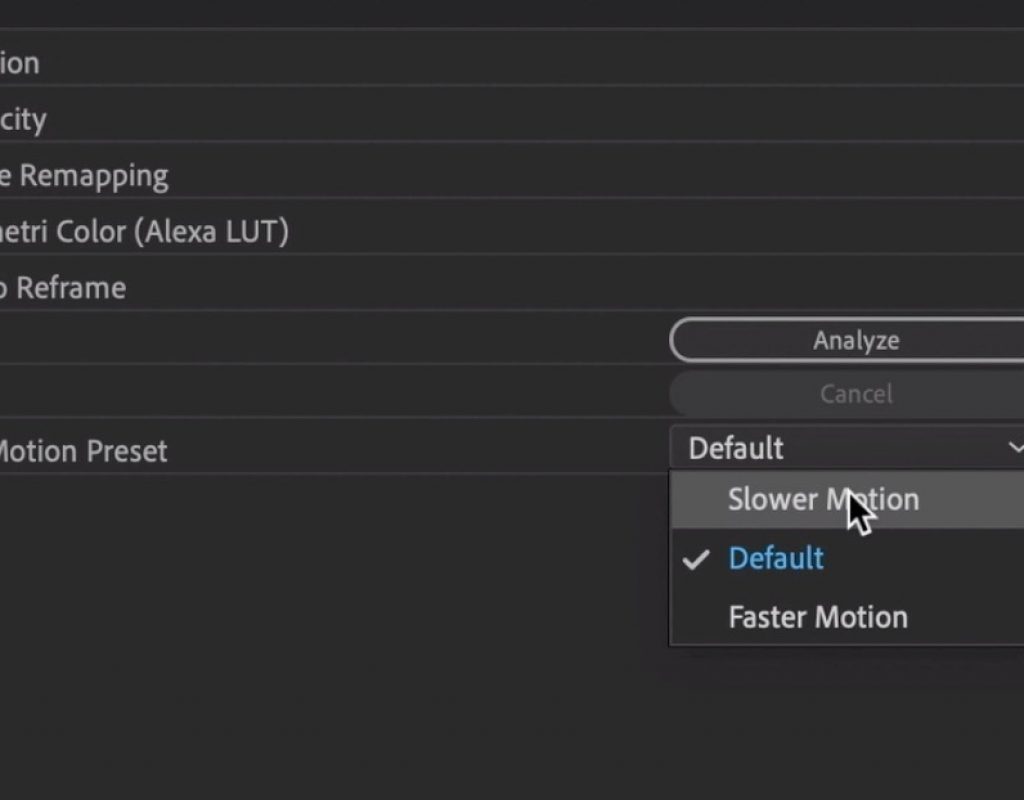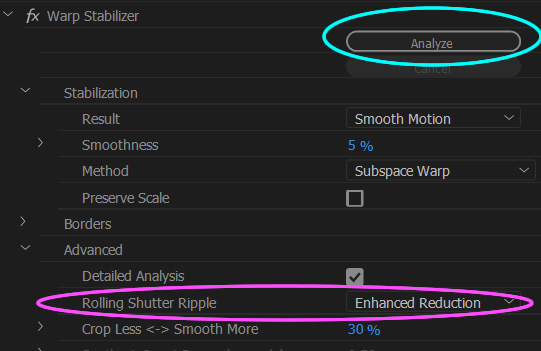

This process continues automatically in the background, allowing you to continue working on other tasks in Premiere Pro.Ĩ When the stabilization process is complete, play the clip. Once the analysis process is complete, an orange bar appears across the image, indicating that it is being stabilized. Notice that about halfway through the clip there is a considerable amount of camera shake, which would ordinarily make this shot unusable.Ĥ Press Shift+7 to make the Effects panel active.ĥ Type warp in the Rapid Find box to quickly locate the Warp Stabilizer effect.Ĭlip analysis progress, in number of frames and percentage, is displayed in the Effect Controls panel.
#Warp stabilizer click analyze to begin pro
The advanced image analysis, which takes place behind the scenes in Premiere Pro does all the heavy lifting for you.ġ In the Project panel, select the Warp Stabilizer bin.Ģ Double-click the Warp Stabilizer sequence to open it in the Timeline panel. What makes the Warp Stabilizer so unique is that you generally don’t need to change any of the default settings to get a good result. The Warp Stabilizer, introduced in Adobe After Effects CS5.5 and now available in Adobe Premiere Pro CS6, is an incredibly advanced stabilization tool that can make this type of footage look as if it was recorded with a sophisticated camera rig. This will take a moment.Note: This excerpt is from the forthcoming book Adobe Creative Suite CS6 Production Premium Classroom in a Book, ISBN 978-8-9.Ī common issue that occurs with footage recorded on handheld cameras is that it can be shaky and uneven, making it difficult to watch.

The speed of analysis is correlated to the strength you have set, the higher the strength dial is turned up, the longer analysis will take.Ĭlick on the “Analyze” button to begin footage analysis. The Strength knob increases or decreases the amount of points being considered for stabilization analysis. The orange points are data that will not being considered for stabilization, in response to the Slow/Fast and Center/Edge choices you made earlier. The white tracking points indicate points which stabilizer will use to determine the picture trajectory.

The tracking points will adjust in real-time on the preview window to the right. If it's a break-dance performance with a bunch of action in the middle, then analyzing the edges is a better option to keep the stabilization smooth. For example if it's a shot with the subject in the middle of the frame while the camera is walking ahead of it, then the stabilization should analyze the center of the frame. Use the Center/Edge dial to indicate whether the point of stabilization is more toward the center or the edge of the picture. The Faster setting is helpful for more chaotic movement, such as following a flying bird with a handheld camera. Move the dials toward the slow setting for objects that move slowly in the picture, for example a horizon line shot from a moving boat. Set the Slow/Fast dial to help stabilizer further identify the dominant object you want to stabilize.

The first step is to set the Motion Emphasis dials. It first analyzes your footage for motion and then allows you to set smoothing and crop settings. Stabilizer works using two different steps. To run an Analysis, navigate over to the Effect Controls window and click on the “Setup.” icon to open the Stabilizer interface. You will see an “Analysis Required” banner over your footage that lets you know footage analysis has not been done. Navigate over to Video Effects>NewBlue Essentials.ĭouble-click or drag and drop Stabilizer to the clip in the timeline you want to stabilize. To access Stabilizer, browse your Effects folder.


 0 kommentar(er)
0 kommentar(er)
